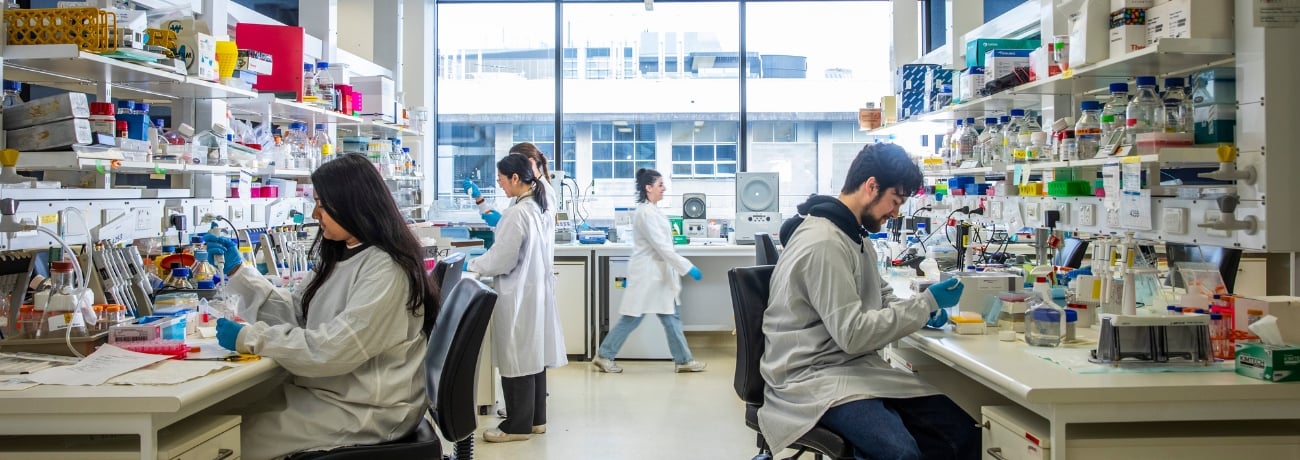Stem Cells and Neural Development Group
Our research is focused on using human stem cells to model neurological diseases and develop new therapies. We are particularly interested in understanding and modeling human neural development, as mimicking these processes could help improve recovery and regeneration.
Our group is working on techniques to control the fate of human stem cells into defined neuronal populations that can be used in neural transplantation. We are also developing methods to ensure that these stem cell-derived transplants effectively integrate, function and remain safe when used to treat conditions such as Parkinson’s disease and stroke.
Alongside this, our group uses stem cells from patients with Parkinson’s disease and motor neurone disease to create advanced models that helps us to better understand these conditions and develop new drug therapies.
Research interests
|
Techniques
|
About our research
In our group, we are working on several important research topics, including:
- improving our understanding of neural development
- molecular mechanisms underpinning axonal plasticity
- establishing protocols for directed differentiation of human pluripotent stem cells
- the use of stem-cell derived neurons for cell transplantation
- strategies to improve neural graft integration, function and safety
- bioengineering scaffolds to support neural transplants
- modelling human neurodegenerative diseases using stem cells.
Research team
Research team head
Deputy Director and Group Head
Team members
Dr Cameron Hunt
Research Fellow
Senior Research Fellow
Scientific Lead
Research and technical staff
- Brianna Xuereb
PhD students
- Chiara Pavan
- Jennifer Lin
- Andrew Quattrocchi
Selected publications
- Gantner CW, de Luzy IR, Kauhausen JA, Moriarty N, Niclis JC, Bye CR, Penna V, Hunt CPJ, Ermine CM, Pouton CW, Kirik D, Thompson LH, Parish CL (2020), ‘Viral delivery of GDNF promotes functional integration of human stem cell grafts in Parkinson’s disease’, Cell Stem Cell, 26(4):511–526.e5. doi:10.1016/j.stem.2020.01.010
- de Luzy IR, Law KCL, Moriarty N, Hunt CPJ, Durnall JC, Thompson LH, Nagy A, Parish CL (2021), ‘Human stem cells harboring a suicide gene improve the safety and standardisation of neural transplants in Parkinsonian rats’, Nature Communications, 12(1):3275, doi:10.1038/s41467-021-23125-9
- Hunt CPJ, Penna V, Gantner CW, Moriarty N, Wang Y, Franks S, Ermine CM, Luzy IR, Pavan C, Long BM, Williams RJ, Thompson LH, Nisbet DR and Parish CL (2021), ‘Tissue programmed hydrogels functionalized with GDNF improve human neural grafts in Parkinson’s disease’, Advanced Functional Materials, 31(47):2105301, doi:10.1002/adfm.202105301
- Moriarty N, Gantner CW, Hunt CPJ, Ermine CM, Frausin S, Viventi S, Ovchinnikov DA, Kirik D, Parish CL and Thompson LH (2022), ‘A combined cell and gene therapy approach for homotopic reconstruction of midbrain dopamine pathways using human pluripotent stem cells’, Cell Stem Cell, 29(3):434–448.e5, doi:10.1016/j.stem.2022.01.013
Contact us
For more information about our group’s research you can contact us by submitting this form.
